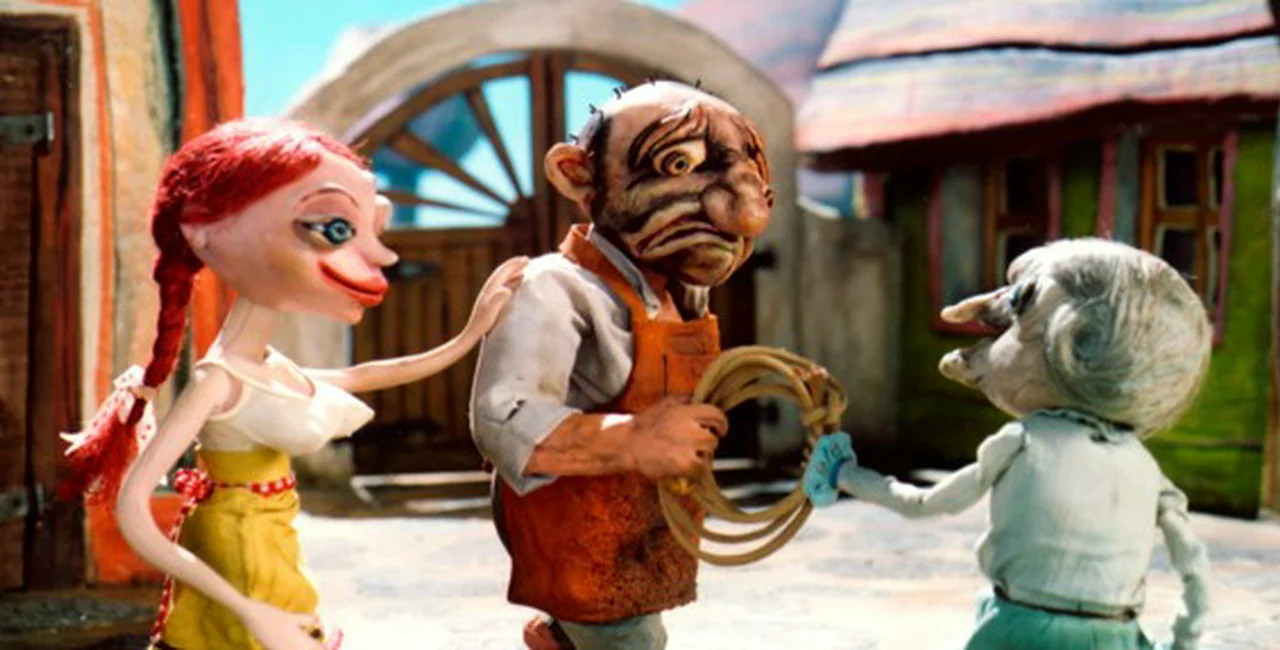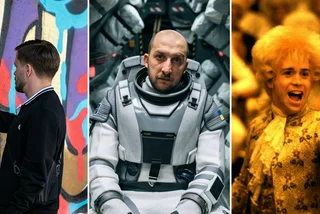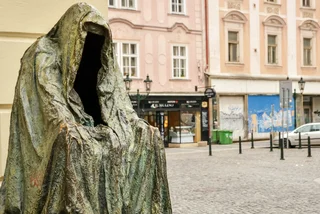Animation has a long history in the Czech Republic, dating back to cinema’s silent era; if you’re only familiar with mainstream cartoons (večerníčky) like Krtek or Pat and Mat, you’re missing out on some wonderful (and sometimes, very adult) animated shorts and features, which incorporate styles from traditional pen-and-paper to stop-motion and puppet animation.
Choosing the best of the best was no easy task; I initially set out to make a top ten list, but discovered too much value to be easily condensed. There are still a lot of names not included in this list; with an eye towards the more artistic, I’ve left off many (but not all) of the talents behind the famous children’s programs.
While the first three names below don’t really fit the spirit of this list (Gene Deitch is American, Garik Seko is Georgian, and Jan Pinkava left the Czech Republic at the six), their accomplishments merit a special mention:
* Gene Deitch
Gene Deitch isn’t Czech, but the American animator has been living and working in Prague since 1959. Deitch was nominated for an Oscar for his 1958 short Sidney’s Family Tree, and his 1961 short Munro won the Award, but he’s most known for the Tom & Jerry shorts that he directed and produced in Prague in the early 1960s. Considered by ardent Tom & Jerry many fans to be a low point in the series (though 1962’s The Tom and Jerry Cartoon Kit is something of a classic), they were nonetheless largely successful and helped bring the cartoon duo back into the spotlight.
Deitch has done a lot much more than Tom & Jerry, and has continued to produce animated shorts in Prague for the past six decades. His memoir For the Love of Prague is a must-read for Prague-based expats.
Munro (1961):
* Garik Seko
I’ve been unable to unearth much information about this Georgian-born animator who made films for Studio Jiří Trnka from the 1960s through the 1980s, but his work speaks for itself; a terrific collection of his stop-motion and puppet-animated films (from, apparently, a Japanese source) can be found on YouTube.
Ex.Libris (1981):
* Jan Pinkava
Jan Pinkava was born in Prague, but emigrated to the UK with his family in 1969, at the age of six; his work for Pixar has made him, perhaps, the most internationally renowned contemporary Czech-born animator. Geri’s Game, which he directed in 1997, won the studio their third Academy Award for Best Animated Short.
Pinkava started work on Ratatouille in 2000, but was replaced by Brad Bird in 2005, and left the company soon afterwards. Ratatouille went on to receive five Academy Award nominations and is considered by many to be Pixar’s finest film; Pinkava is credited as co-director on the final product. The director more recently worked with animation studio LAIKA, who released Paranorman in mid-2012.
Geri’s Game (1997):
20. Aurel Klimt
Utilizing a variety of techniques in his stop-motion and puppet-animated films, Aurel Klimt is best known for his work on the Fimfárum series, based on works by Jan Werich. He directed segments of the first film alongside Vlasta Pospísilová, and segments of the second with Pospísilová, Jan Balej, and Břetislav Pojar, who Klimt studied under at FAMU. Currently, Klimt is working on the feature-length project Lajka.
Pád (1999):
19. M+B+D (Miloš Macourek, Adolf Born, Jaroslav Doubrava)
Writer Miloš Macourek, director Adolf Born, and animator Jaroslav Doubrava are best known for their children’s series Mach a Šebestová, but the trio worked as collaborators and co-directors throughout the 1970s and 1980s and produced a number of impressive one-off shorts, many of them decidedly more adult in nature.
What If… (1972):
18. Vladimír Jiránek
Unlike most of the other names on this list, Vladimír Jiránek isn’t known especially for his animation. Instead, he’s most famous as an illustrator and political cartoonist: his work appears in Lidové noviny, Mladá fronta DNES, Hospodářské noviny, Reflex, and other media outlets. His style is indelibly Czech, and that has carried over to the various shorts he has animated (though not always working as a director), which have included the children’s programs Pat a Mat (for director Lubomír Beneš) and Bob a Bobek (for Václav Bedřich).
Zpráva o stavu civilizace (1981):
17. Vlasta Pospísilová
Vlasta Pospísilová learned from the best, working as an assistant animator with Jiří Trnka (Sen noci svatojánské – A Midsummer Night’s Dream) and Jan Švankmajer (Jabberwocky). Since then, she worked on the puppet-animated večerníček Broučci for Studio Jiří Trnka, but made her largest impression with the Fimfárum series, directing multiple segments in each of the trilogy’s three films, which are based on works by Jan Werich.
Fimfárum – Až opadá listí z dubu (2002):
16. Berthold Bartosch
Berthold Bartosch was born in Bohemia and worked with German silhouette animator Lotte Reiniger in the 1920s before moving to Paris in 1930. There, he made L’Idee (The Idea), a landmark piece of animation using a unique paper cutout style that is considered to be one of the first serious animated films ever made. The Idea also incorporated the use of the Ondes Martenot, making it one of the oldest films to use an electronic soundtrack. Unfortunately, while Bartosch lived until 1968, The Idea was to be his last widely-seen work; an anti-war project he spent four years working on in Paris in the late 1930s was destroyed during Nazi occupation.
L’Idee (1932):
15. Lubomír Beneš
Lubomír Beneš is most famous for Pat and Mat, his dialogue-free stop-motion creation that has received international recognition and enduring popularity (Beneš died in 1995, but more recent episodes of Pat and Mat have been directed by his son, Marek). But while Pat and Mat is an indelible aspect of Czech culture (and, in my opinion, tops Krtek as the best Večerníček), Beneš directed hundreds of other stop-motion and puppet-animated films for Krátký Film Praha, Czechoslovak TV, and later his own studio, AIF. Beneš also starred in Ropáci, an early short from acclaimed director Jan Svěrák.
Král a skřítek (1981):
14. Pavel Koutský
Part Bill Plympton and part Jan Švankmajer, Pavel Koutský’s short films are characterized by their unique style, which he terms “total animation”: the animation of each frame of the film separately. A favorite on the festival circuit, the director made a splash in 1987 with his short Curriculum Vitae, which won the Golden Bear at the Berlin International Film Festival; he followed that over the next decade with four Silver Bears. Koutský’s short Média won the FIPRESCI Prize at the 2000 Annecy International Animated Film Festival.
Média (2000):
13. Václav Bedřich
Director and animator Václav Bedřich might be the king of the Večerníček: among his creations are indelible Czech classics such as Maxipes Fik, Bob a Bobek, Říkání o víle Amálce, O makové panence, Štaflík a Špagetka, and many others, including the 1955 45-minute feature Čert a Káča. After studying under Jiří Trnka at Bratři v triku, Bedřich went on to make some 300+ Večerníček shorts in addition to that classic Večerníček intro for Czech TV, which is still used today, almost fifty years after its creation in 1965.
Čert a Káča (1955):
12. Zdeněk Miler
Zdeněk Miler will forever be tied to his most popular and enduring creation: Krtek, the Little Mole, who has even made a journey into outer space. But that’s no reason to overlook the other works of the director and animator, who passed away last year at the age of 90. Some of his other child-friendly creations included Štěňátko (The Puppy) and Cvrček (The Cricket). Two of his more important works were the unusually dark and evocative Romance Helgolandská (1977) and the anti-communist Rudá stopa (Red Stain, 1962), both of which I’ve been unable to locate (in full, at least) online.
Jak sluníčko vrátilo štěňátku vodu (1960):
11. Paul Fierlinger
Paul (Pavel) Fierlinger, the son of Czechoslovak diplomats, was born in Japan and raised in the US before embarking on a career as an illustrator and animator in Prague. You’re probably not familiar with his Czech-produced work, which he made for Krátký film Praha in the late 1950s and early 1960s (and I’ve not been able to locate any of it), but any North American child of the 70s or 80s will be intimately familiar with the award-winning animated shorts he produced for the children’s program Sesame Street after emigrating to the US in 1967. Most recently, Fierlinger made the terrific feature-length My Dog Tulip with his wife Sandra, based on J.R. Ackerley’s bestselling memoir.
Sesame Street – The Alphabet Song:
Those are my picks for 11 – 20. Who should make the top 10? Check back next month for the next installment!
Read also: Top 20 Czech Animators, pt. 2












 Reading time: 7 minutes
Reading time: 7 minutes 

























